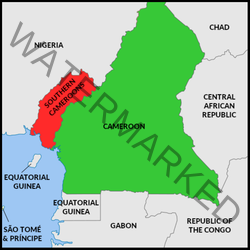The trajectory from 1961 through 1972 illustrates that the overriding policy of La République du Cameroun, whether under Ahmadou Ahidjo or later Paul Barthélemy Biya’a Bi Mvondo, was less about partnership and more about absorption of Southern Cameroons
By Timothy Enongene Tombel,
It is important to reemphasise these facts as Cameroon prepares for another presidential process—commonly referred to as an election, though in practice often resembling a prearranged selection. Just before the UNGA session of 1959, the same year Dr. John Ngu Foncha replaced Dr. E.M.L. Endeley, Ahmadou Ahidjo—then Prime Minister of Cameroun Français—made a declaration reported by Agence France Presse (AFP). He expressed that “Cameroun Français would be happy to unite with Ambazonia on the basis of equality,” further adding that although they were more populous, they would not annex Southern Cameroons. Subsequent events, however, suggest otherwise, particularly developments leading up to 1972.
Most telling was the unilateral declaration of the “Federal Republic of Cameroon” on September 1st, 1961. President Ahmadou Ahidjo and La République du Cameroun made no reference to the several meetings held between their delegation and that of Prime Minister Dr. John Ngu Foncha. A government acting in good faith might reasonably have introduced such a declaration with a preamble acknowledging those engagements: “Considering the several meetings held since 1959 and up to August 1961, we, the Peoples of La République du Cameroun and Southern Cameroons, having agreed, hereby declare the ‘United Cameroon Federation’ as coined by the Technical Experts of the United Nations Decolonization Committee.” The omission was significant.
The trajectory from 1961 through 1972 illustrates that the overriding policy of La République du Cameroun, whether under Ahmadou Ahidjo or later Paul Barthélemy Biya’a Bi Mvondo, was less about partnership and more about absorption of Southern Cameroons. This perception was reinforced decades later. During a radio debate on Sky One in October 2007—on the occasion of Ambazonia’s Independence Day commemorations—a militant of the Union des Populations du Cameroun (UPC), Oum, recalled being told by his party leadership that “Anglophones are our brethren who ran to Nigeria; they were recaptured and brought back to Cameroon.” From such a perspective, Ambazonians were not regarded as equal partners but as a population subsumed into a larger entity.
This helps explain why many Cameroonians today perceive Ambazonia simply as two of their ten administrative regions. Former footballer Joseph Antoine Bell stated on Equinoxe TV that transferring state power to “anglophones” would be unjust, as “NW & SW” are merely two of ten regions.
Similarly, in offices in Yaoundé and across La République du Cameroun, one often hears expressions such as: “Chez nous, il y a deux anglophones, deux Bamilékés, quatre Bulus, trois Ewondos, etc.” In this framing, Ambazonia is treated as an ethnic designation rather than as a political entity with a distinct international history.
For those Ambazonians who have been enlisted to participate in elections or selections designed to legitimise succession within La République du Cameroun, the lesson is clear: Southern Cameroons retains its distinct identity and legal claim. Any durable resolution can only emerge through mediated negotiations aimed at defining how the two entities coexist as neighbours.
Ambazonia’s leadership has already declared the restoration of the Federal Republic of Ambazonia, drawing historical parallels with the United States. In 1776, George Washington and his contemporaries proclaimed an end to colonial ties with Britain, setting in motion a struggle that eventually gave rise to a powerful state. Similarly, Ambazonians argue that their restored sovereignty is irreversible. If effectively exercised, they contend, Ambazonia could within a decade serve as an example of resilience and self-determination within Africa.
AmbazoniaIsGone
AmbazoniaIsFree
Timothy Enongene
Tombel,
Kupe Muanenguba,
Atlantic Zone,
Federal Republic of Ambazonia

